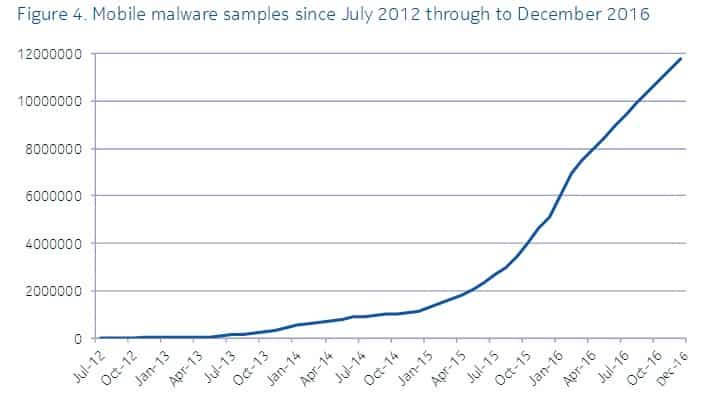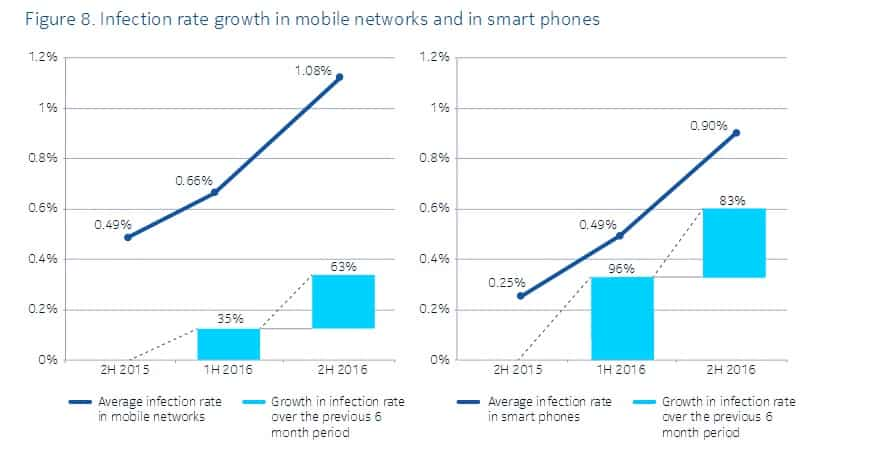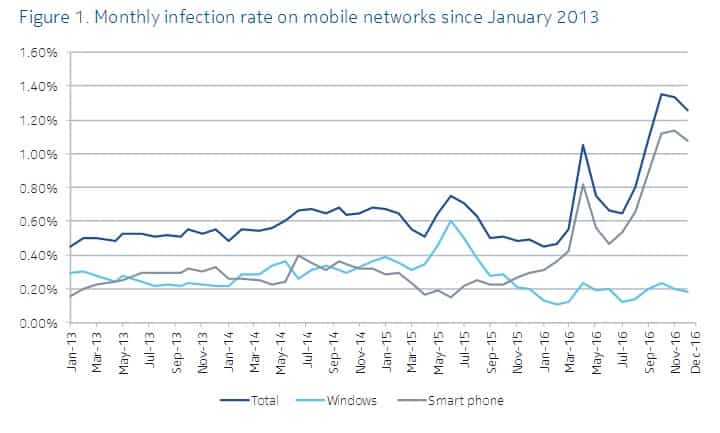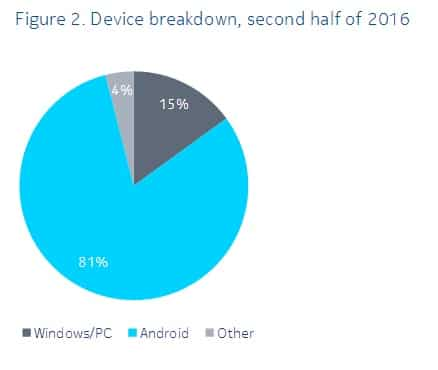Smartphone malware surge 400% in 2016; Android devices most affected
The report further that the second half of 2016 saw these malware attacks rise by 83%.

A Nokia Threat Intelligence Report said that there has been a surge of 400% in smartphone malware attacks in 2016.

Source: Nokia Threat Intelligence Report
The report further that the second half of 2016 saw these malware attacks rise by 83%.

Source: Nokia Threat Intelligence Report
The report examined general trends and statistics for infections in devices connected through mobile and fixed networks around the world.
The report outlined a steady increase in mobile device infections throughout 2016, with malware striking 1.35% of all mobile devices in October - the highest level seen since reporting started in 2012.

Source: Nokia Threat Intelligence Report
This revelation comes at a time when smartphone penetration has been increasing in India and the government has been pushing for digital transactions using smartphone phones.
While Android-based smartphones and tablets continued to be the primary targets (81%), reflecting the prevalence of the operating system worldwide, iOS-based devices also suffered attacks in the second half of the year (4%), primarily by Spyphone surveillance software that tracks users' calls, text messages, social media applications, web searches, GPS locations and other activities.

Source: Nokia Threat Intelligence Report
The Threat Intelligence Report also exposed major vulnerabilities in the rapidly expanding universe of IoT devices, underscoring the need for the industry to re-evaluate its IoT deployment strategies to ensure these devices are securely configured, managed and monitored.
“In late 2016, the Mirai botnet assembled an army of compromised IoT devices to launch three of the largest DDoS attacks in history, including an assault that took down many high-profile web services. These attacks underscored the urgent requirement for more robust security capabilities to protect IoT devices from future attacks and exploitation,” said the report.
There was a decrease in Windows or PC infections as it accounted for 15% of malware infections in the second half of 2016, down from 22% in the first half of the year.

Source: Nokia Threat Intelligence Report
The monthly infection rate in residential fixed broadband networks averaged 10.7% in the second half of 2016, down from 12% in the first half, and down from 11% in late 2015. While moderate threat level adware activity decreased in the second half of 2016, high-level threats (eg, bots, rootkits, keyloggers and banking Trojans) remained steady at approximately 6%.
01:50 PM IST






 Nokia confirms US availability of its Android phones
Nokia confirms US availability of its Android phones Snapchat plans to unveil Android smartphone: Report
Snapchat plans to unveil Android smartphone: Report Nokia's mobile networks head Samih Elhage quits, to split business
Nokia's mobile networks head Samih Elhage quits, to split business WhatsApp rolls out two-step verification feature on Android, iPhone & Windows platforms
WhatsApp rolls out two-step verification feature on Android, iPhone & Windows platforms  Nintendo says to launch Super Mario Run Android version in March
Nintendo says to launch Super Mario Run Android version in March